One of the most affordable ways to have beautiful clothes that are sustainable and also affordable is by making them yourself. But hey, if we don’t do it correctly, it can be everything but sustainable, especially if you sew a lot.
This can be solved by easily keeping in mind a few aspects that will transform your sewing projects from cheap to affordable quality. The truth is, if you try your best to make a sustainable item, chances are the quality will increase too. I’ll tell you why: Sustainability cares about long-lasting items that don’t harm the environment and yes, you can do them yourself without spending a lot.
When we think about buying clothes, there is definitely a difference between the prices of a fast-fashion brand and a sustainable brand. A simple t-shirt can probably cost $7 in fast fashion and in a sustainable brand, it can cost up to $40. I know what you’re thinking: $40 for a t-shirt?! No thanks, I rather do it myself! And if you love fashion and usually enjoy wearing new items every now and then, paying $40 for one item seems crazy. Don’t get me wrong, it is a fair price, but some people rather spend that money on something else.
So on this post we are sharing with you the guide you need to sew sustainably.
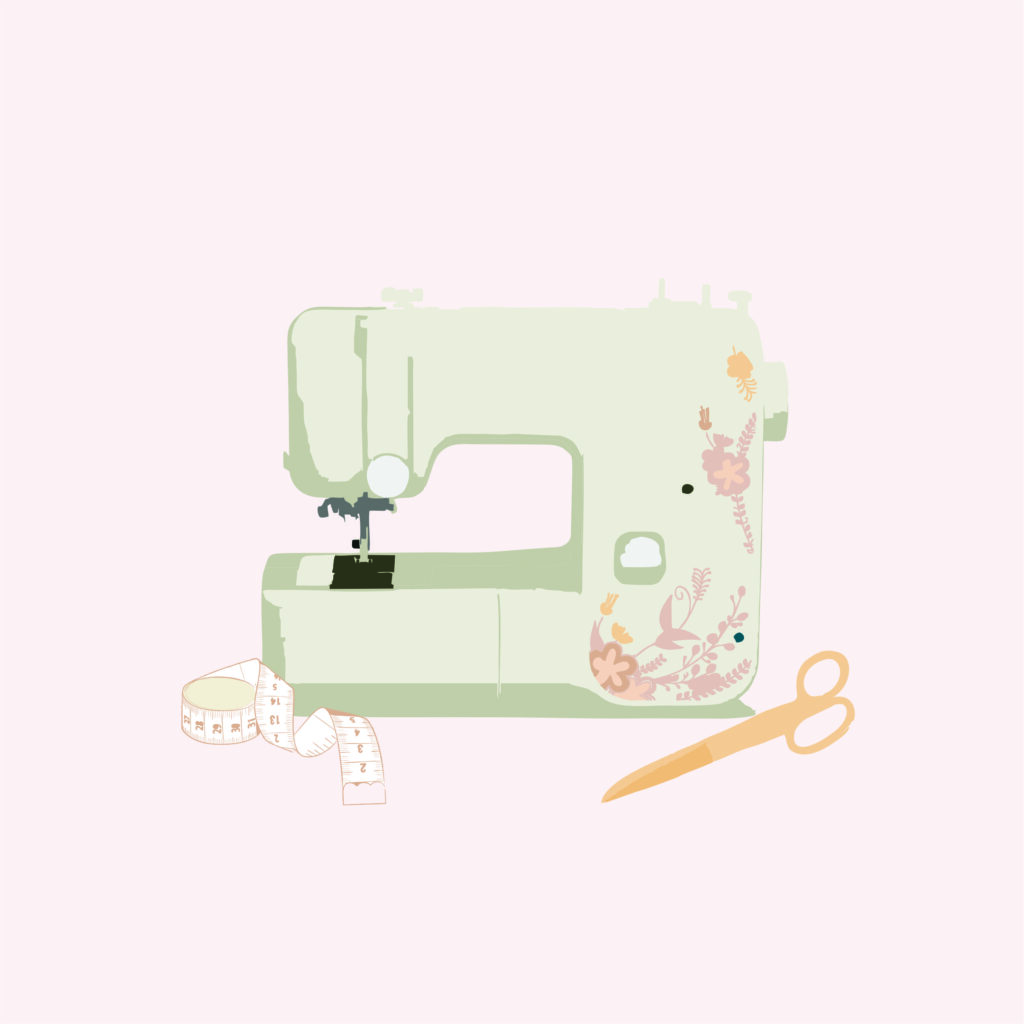
1. Choose the right fabric.
You probably know there are to types of fabrics:
- Knits (Jersey, Interlock, Fleece, French Terry, Rib, etc.)
- Wovens (Denim, poplin, sateen, broadcloth, corduroy, etc.)
Not all the fabrics are the same or work well for the same projects. For example, knits tend to stretch and are great for t-shirts, sweaters, sweatshirts and dresses. But even on the knit category, there’s a difference for every type of knit and its use.
Wovens are not stretchy and are perfect for shirts, pants and skirts. So, maybe you won’t make a t-shirt with poplin fabric, it wouldn’t be practical.
If you want to learn more about the difference between wovens and knits, check out the Instagram post we made about it.
Why does this matters so much?
Well, if you want a long lasting, comfortable and good quality item, you need the right fabric. You won’t achieve that if you don’t choose the right fabric for your project. This is why we always try to share with you what fabric we used for each sewing project and on each pattern, so you end up with great results.

2. Choose sustainable materials. (thrifted or sustainable)
Before you start worrying about the prices, let me tell you, sustainable fabrics are more affordable than a sustainable garments. What elevates the prices in sustainable fashion is that they pay fairly to their manufacturers. Also, the quality of the fabrics is always amazing, or at least I haven’t bought a sustainable fabric with bad quality so far.
Okay, so what I mean with sustainable fabrics is not just fabrics made of organic or recycled materials. I also mean, second hand or deadstock fabrics.
Choose your favorite from this two. But what I can tell you is that second hand fabrics like the ones you find in A Thriftyy Notion are more affordable. However, if you purchase organic cotton, hemp, linen or bamboo fabrics from Organic Cotton Plus, Simplifi Fabric, or Blackbird you will be purchasing quality and long lasting items, trust me.
Also, don’t forget that upcycling old garments count as sustainable. Use that fabric and it’s like second hand fabric. Sustainable and free! Who doesn’t want that?
Finally, in case you’re wondering, we made a sustainable fiber guide especially so you can check out what are the most sustainable fibers out there.
If you can’t find sustainable materials, try to look for high quality fabrics that are exactly for the garment you’re making. Avoid cheap materials, avoid polyester, unless it is recycled or second hand. Try to buy cotton, linen, or any natural fiber.

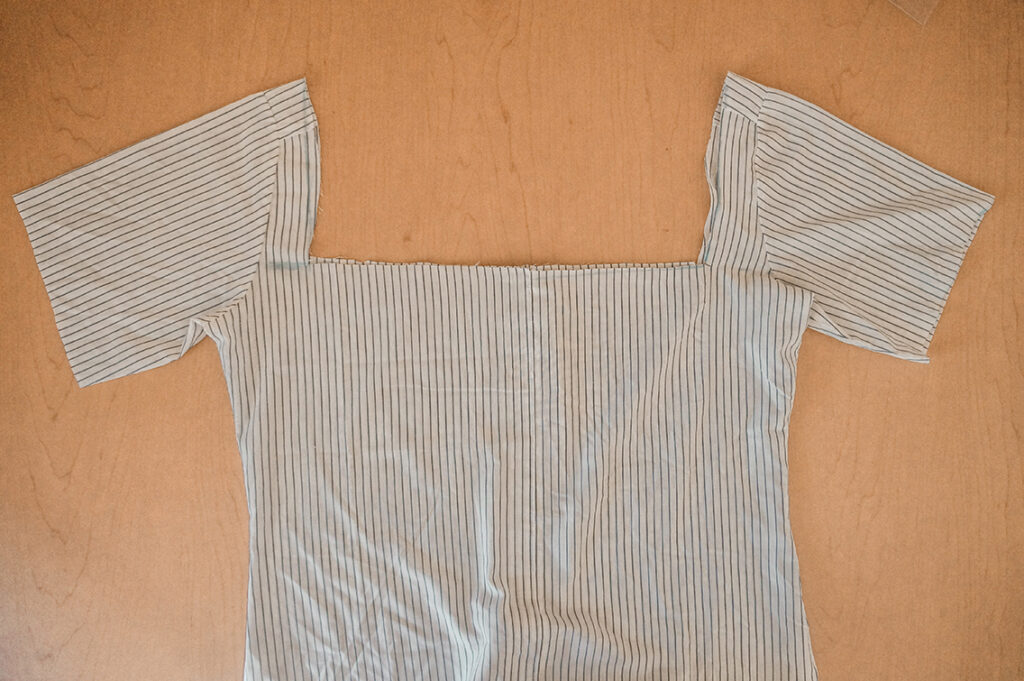
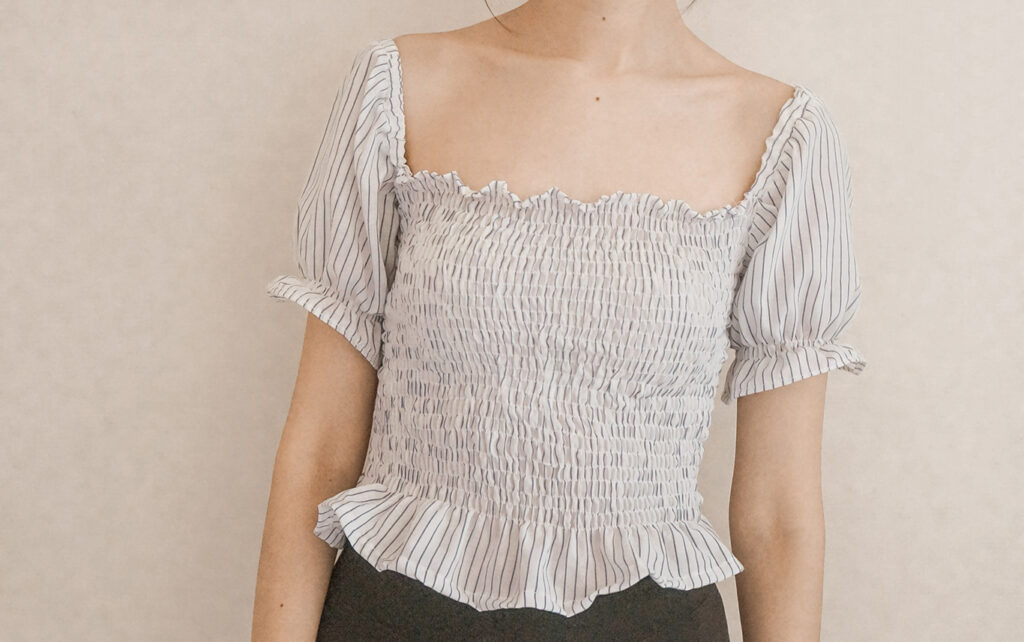
3. Design matters.
When you are buying new clothes consciously, you will probably search for items you will wear a lot and that you actually love. It’s the same when it comes to sewing. Make something that you will love.
I honestly make my clothes when I can’t find something I want in sustainable brands, or when it exceeds my budget. Maybe you can’t find something in your size, or in the color you want it to be.
What matters here is that you also make clothes that you love, or that are versatile and fit your lifestyle. Design is key.

4. Don’t throw the fabric left overs to the garbage.
It looks tempting, I know and I get it, keeping tiny pieces of fabric that don’t even look useful anymore. Well, you may be surprised but there sustainable options and throwing them into your trash can isn’t one of them.
But hey, there’s no need to get overwhelmed. We actually made a blog post with 15 creative ideas to reuse those fabric left overs, and yes, this includes that tiny little useless fabric scrap. And, if you don’t want to reuse them, we also show you what other alternatives you can take for your natural and synthetic fibers. Check it out.
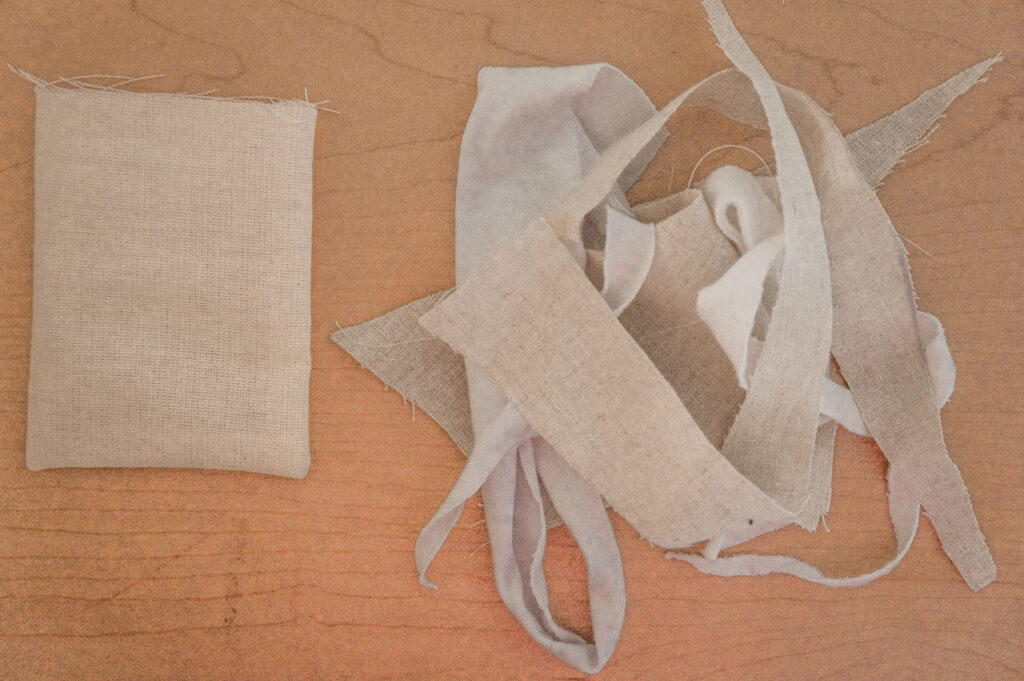
5. Consider your particular circumstances
If you want to sew sustainably, make sure to also take advantage of that. After all, it is you making your clothes. I mean, we are humans and our shape is changing constantly. If you tend to gain weight or maybe you like to follow trends, then adapt that clothes to your circumstances. When you sew the sides, maybe leave some extra fabric just in case you have to make those pants bigger later. Or maybe midi skirts are the thing today, but tomorrow maxi skirts will be on trend.
Keeps those details in mind and you will have a more long lasting garment that you will be able to use no matter what.
This also works if you’re the one sewing your kid’s clothes. They are growing everyday and leaving some extra fabric for it can save you money and with that, you’re helping the environment by reducing your consumption.
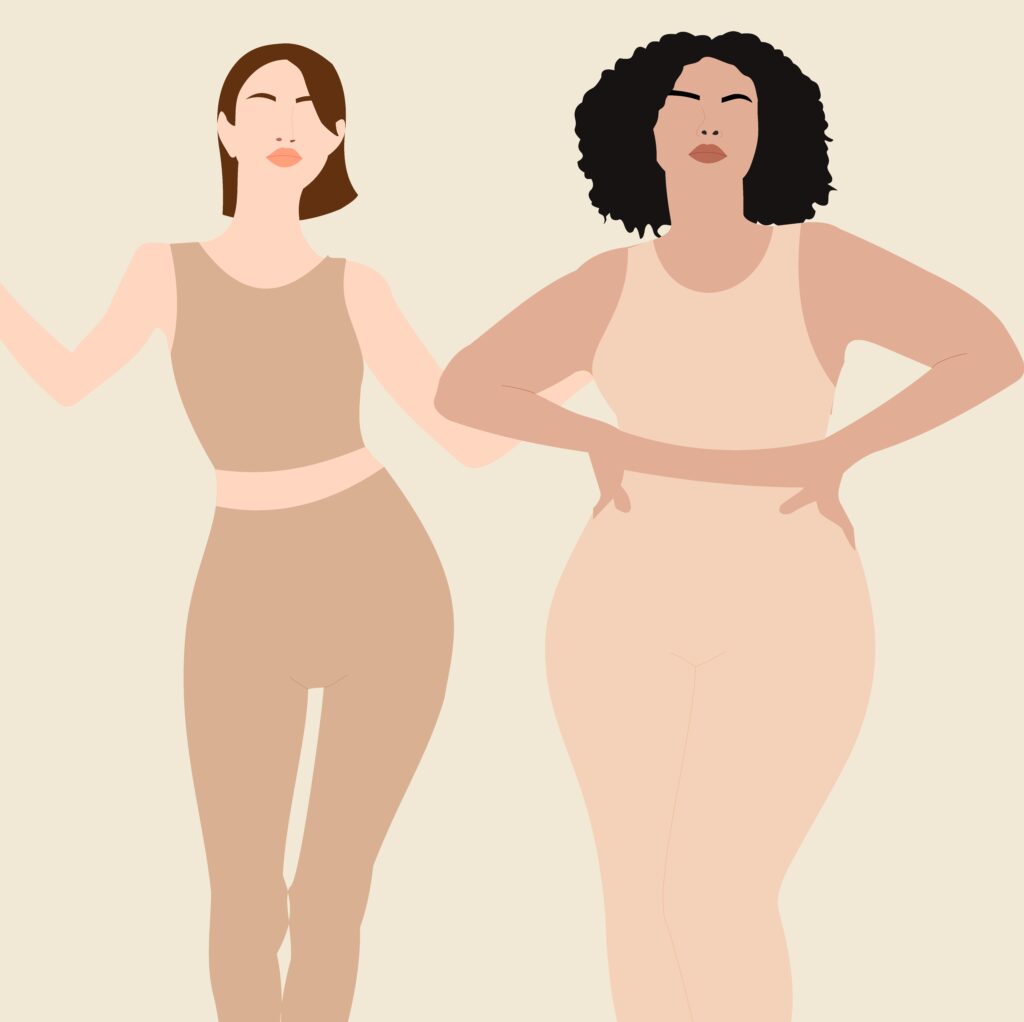
6. Invest in a machine (or thrift it)
While there are stitches that look better made by hand, a machine can save you time and sometimes even make more resistant stitches and this means, more quality in some cases.
For example, an overlock machine helps to overcast seams, keeping the fabric in place and avoiding seems to unravel. It also help you sew knits, as the stitch can be stretchy. Owning a traditional sewing machine and an overlock is sometimes all you need for handmade projects and quality.
If you don’t have an overlock, check out how to make a French seam that adds even more quality to your garment.

7. Try to keep it natural.
This is related to sustainable fabrics, but it is different. Keeping your fabrics natural will make things easier to upcycle or give that item a new life, but it can also be WAY LESS harmful to the environment. It can even be compostable, so once you know you won’t wear it anymore, you can even compost it if it is 100% natural (no fiber blends like spandex or polyester).
The best part of this is that you can dye your garments with natural dyes and give it a whole new life. A recycled polyester fabric can’t be dyed at home as an organic cotton would. And trust me, by simply dyeing an old garment, you can make it look like something else, sometimes it looks brand new.
With natural, I’m also talking about the notions, buttons, thread and zippers. I usually avoid making fabrics that requiere notions, but sometimes they are necessary. Don’t worry, a lot of online stores that sell sustainable fabrics also offer sustainable notions. I’ve purchased coconut and corozo buttons from Organic Cotton Plus and I absolutely love them. I’ve purchased organic cotton lace and zippers, natural dyed ribbon and thread. Trust me it looks even cuter, and no, this post is not sponsored, I wish.
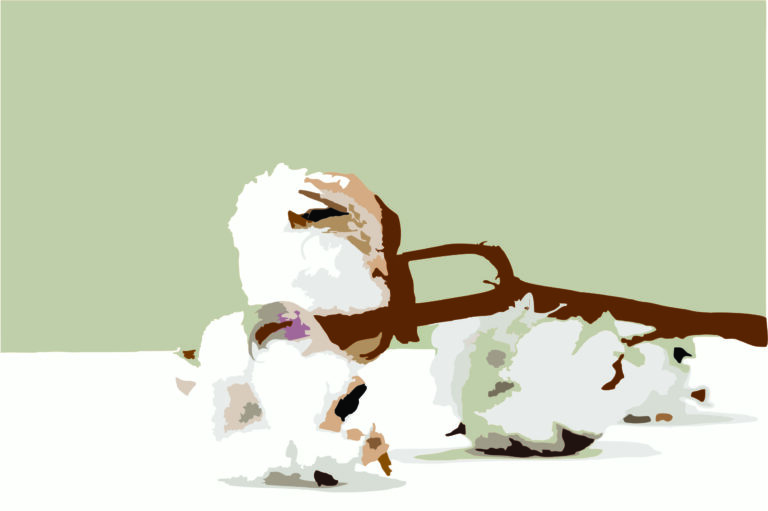
8. Know what you’ll do when you don’t want the garment anymore
Have an idea of what you can do after you stop using it. Thinking about the end make things more intentional.
Do you know someone who would love it? You can donate it, sell it, upcycle or if it is 100% natural you can compost it. This is why I always recommend natural fibers, you can get rid of the item with no guilt of leaving residues or polluting.

And that’s it! I hope you found this useful and inspiring to apply sustainability as you continue your sewing projects. It really makes a difference and help you value and love your clothes more + the quality increases long with the uses.
Happy sewing journey!
All the love,
Lucy
become an official member of our club!
We would love you to be part of our community. There are monthly freebies, giveaways, weekly tutorials, and other secrets we only share with our insiders!




Leave a Reply